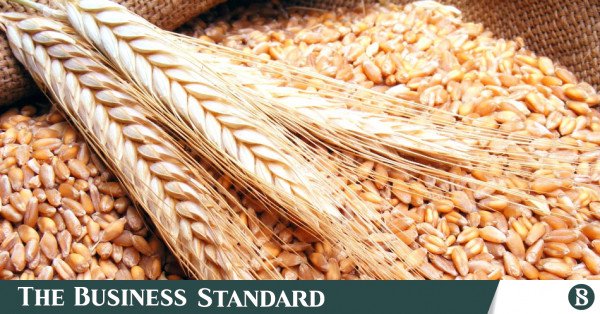- In a space of just two days since the Russia-Ukraine agreement was reached, wheat prices have dropped Tk100 per maund at the Khatunganj wholesale market
- Driven by the war, wheat prices earlier reached their all-time high – Indian and Canadian varieties at Tk1,650 and Tk2,150 respectively –in mid-May.
- Before the conflict broke out in late February, Indian and Canadian varieties were sold for just Tk900 and Tk1,100 respectively.
- On February 24, the day the war started, wheat was sold at $916 per tonne in the world market. In just two weeks, the grain price hit $1,421 on 7 March.
- On Sunday, wheat was sold for just $755 per tonne in the world market
Bangladesh’s wheat market has started cooling down from a record high following an agreement between Russia and Ukraine – two of the world’s major grain baskets – to use the Black Sea for grain exports.
In the space of just two days since the deal was reached, wheat prices have dropped Tk100 per maund (37.32 kg) at Chattogram’s Khatunganj, the country’s largest wholesale market for consumer goods.
According to importers and wholesalers, as an outcome of the agreement, wheat prices have started to fall in the international market which has also impacted the Bangladesh market.
At Khatunganj, Indian wheat is selling at Tk1,400 per maund, down from Tk1,500 at the end of the last week.
The price of wheat imported from Canada has also decreased by Tk80 per maund from Tk2,000 at the end of last week.
Driven by the war, wheat prices reached their all-time high – Indian and Canadian varieties at Tk1,650 and Tk2,150 respectively –in mid-May.
However, before the conflict broke out in February, Indian and Canadian varieties were sold for just Tk900 and Tk1,100 respectively.
According to wholesalers, even six months ago, the wheat price was Tk900-1000 per maund but, after the conflict started, the price skyrocketed, exceeding Tk2,150. The flour price in the country has also soared almost twice as a result.
As the demand for wheat is the highest in the country after rice as a food grain, common people are in trouble due to the usual price in its prices. However, as wheat prices are falling in the international market as well as in the domestic market, they think that the price of flour may come down soon.
Aman Ullah, the proprietor of Aman Enterprise, a wheat wholesaler at Khatunganj, said in the last two days, the price of the grain has dropped at least Tk80-100 per maund.
He said that prices are likely to fall further if Europe’s wheat supply normalises globally.
Importers say due to the Russia-Ukraine agreement, wheat and other food grains can be imported at low prices. Even if Bangladesh does not import goods from Russia and Ukraine, it will get the benefits of the price drop in the global market.
Because food grains can be imported from various countries of Eastern Europe through a third country or through agencies of those countries, they added.
Currently, the wheat harvesting season has started in several countries of Central Europe. In the next few months, the harvesting season of several leading foodgrains producing countries such as Canada, Argentina and Australia will begin.
Due to this in the upcoming season, the global foodgrains market will remain stable in a downward trend. They expect as a top importer of consumer goods, Bangladesh’s product market will go down.
Nurul Alam, the proprietor of A Zaman and Brothers, a consumer goods importer, said there have been several positive changes in the Western world over the Russia-Ukraine issue, which will play a major role in the global economy.
However, due to an appreciation of the dollar in the domestic market and the high freight costs, Bangladesh may not get 100% of its benefits, but he thinks that the upward trend in the price of the country’s commodity market will go down gradually.
According to the Chattogram customs, 40 lakh tonnes of wheat has been imported into the country in fiscal 2021-22, which was 54.43 lakh tonnes in the previous fiscal year.
The import was 64.34 lakh tonnes, 56.29 lakh tonnes and 58.81 lakh tonnes in 2019-20, 2018-19 and 2017-18 fiscal years respectively.
The day after the start of the Russia-Ukraine conflict, the wheat prices became unstable in the international market. According to Investing.com, on February 24, the day the war started, wheat was sold at $916 per tonne. After a day of continuous increases, in just two weeks, the grain price hit $1,421 on 7 March.
However, the wheat was sold for only $755 per tonne in the world market on Sunday. That means the price of wheat has returned to the pre-war level.


